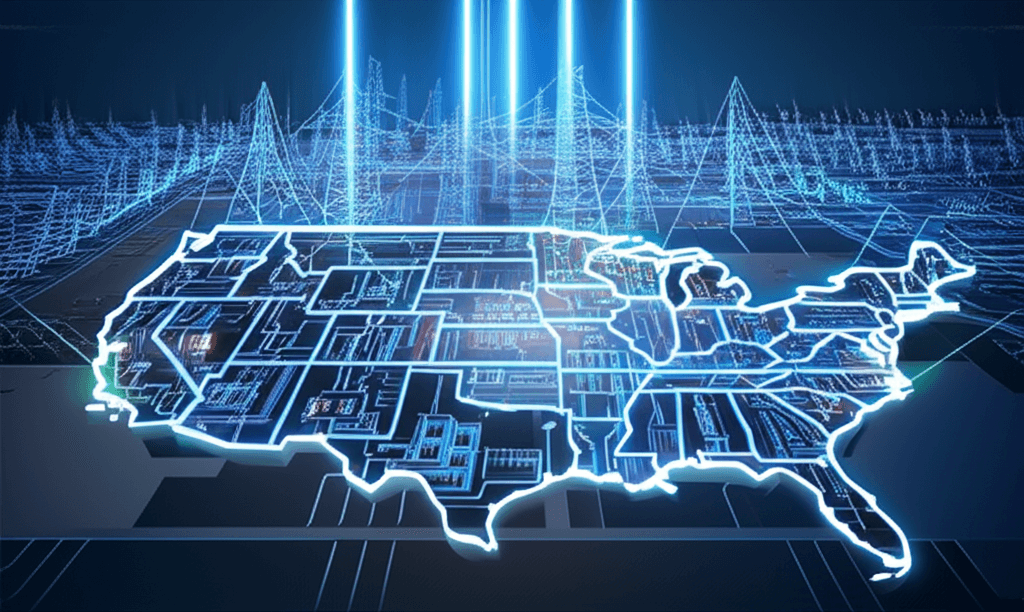Oracle, OpenAI Unleash Stargate: $500 Billion AI Supercomputer Project
Oracle and OpenAI's $500 billion "Stargate" project aims for US AI leadership, demanding unprecedented power and infrastructure.
July 22, 2025

In a significant escalation of the global artificial intelligence arms race, Oracle and OpenAI have announced a major expansion of their collaboration, committing to develop an additional 4.5 gigawatts of data center capacity in the United States.[1][2] This move is a core component of the ambitious "Stargate" project, a multi-faceted and massively funded initiative aimed at cementing America's leadership in AI.[2][3] The sheer scale of this undertaking, which will reportedly be equipped with over 2 million chips, signals a new phase in the buildout of the foundational infrastructure required to power the next generation of artificial intelligence.[2]
The recent announcement deepens an already significant partnership between the cloud infrastructure provider and the prominent AI research lab.[4] The agreement will see OpenAI lease the vast computing power from Oracle, leveraging Oracle Cloud Infrastructure (OCI) across a growing number of strategic locations within the U.S.[4][5] This expansion is part of a broader, five-phase plan that OpenAI has reportedly mapped out with its primary partner, Microsoft, with the Stargate supercomputer representing the fifth and most ambitious stage, potentially launching as early as 2028.[6][7] While Microsoft remains a key technology partner and investor in OpenAI, the expanded deal with Oracle highlights a strategy of diversifying cloud infrastructure to enhance scalability and resilience.[4][3][8] The collaboration is a key part of the Stargate joint venture, a $500 billion initiative that also involves SoftBank and the UAE-based investment firm MGX, aimed at building out AI infrastructure to secure a strategic advantage for the United States.[2][5][3]
The Stargate project itself is a venture of almost unprecedented scale, reportedly carrying a total price tag of up to $500 billion over the next four years, with an initial deployment of $100 billion.[3] The initiative, formally announced at a White House press conference, is designed to support the re-industrialization of the United States and provide a critical capability for national security.[3][9] Key technology partners include not only Oracle and Microsoft but also Nvidia, the dominant producer of AI chips, and Arm.[3] While OpenAI will have operational responsibility for the data centers, SoftBank is handling the financial side, with its CEO, Masayoshi Son, serving as the venture's chairman.[3][10] Construction is already underway, with an initial campus in Abilene, Texas, and site assessments are in progress for additional locations in states like Michigan, Wisconsin, Wyoming, and New Mexico.[5][3] Reports indicate that this single deal could be worth as much as $30 billion a year for Oracle, with the revenue stream expected to materialize around 2028.[11]
The quest to build such monumental AI data centers is fraught with immense logistical and resource challenges, chief among them being the colossal demand for power. A single gigawatt of energy can power approximately 750,000 homes, meaning the 4.5 GW expansion alone could require the electricity equivalent of several million households.[5] This insatiable energy consumption is placing unprecedented strain on America's electrical grid, which was not designed for such concentrated, high-intensity loads.[12][13] Data centers already account for a significant portion of U.S. electricity demand, and this share is projected to grow exponentially with the proliferation of AI.[14][15] The continuous, high-power draw required for training and running large language models presents stability challenges for utility providers, who are now scrambling to upgrade infrastructure and rethink grid management.[14][12] To meet this demand, data center developers are exploring a range of power solutions, from building dedicated on-site natural gas power plants to investing in emerging technologies like small modular nuclear reactors.[5][16] The sheer physical scale is also staggering, with plans for sprawling campuses covering hundreds of acres and consuming vast quantities of materials like steel.[17][6]
This massive investment by OpenAI, Oracle, and their partners underscores the strategic imperative of securing computational superiority in the age of AI. The performance and capabilities of advanced AI models are directly tied to the scale and power of the supercomputers they are trained on. By securing a pipeline of immense computing capacity, OpenAI aims to maintain its competitive edge and push the boundaries of AI development, including its long-term goal of achieving artificial general intelligence (AGI).[3] For Oracle, this venture solidifies its position as a critical infrastructure provider in the booming AI economy, challenging established cloud giants like Amazon Web Services and Microsoft Azure.[17][18] The Stargate initiative, with its focus on domestic infrastructure and national security, signals a new era where the race for AI dominance is increasingly viewed as a matter of strategic national importance, akin to historic projects like the interstate highway system.[17][3] The successful execution of this project could not only accelerate AI innovation but also have profound ripple effects across the U.S. economy and its global technological standing.
Sources
[3]
[4]
[7]
[8]
[10]
[11]
[12]
[13]
[14]
[15]
[16]
[17]
[18]